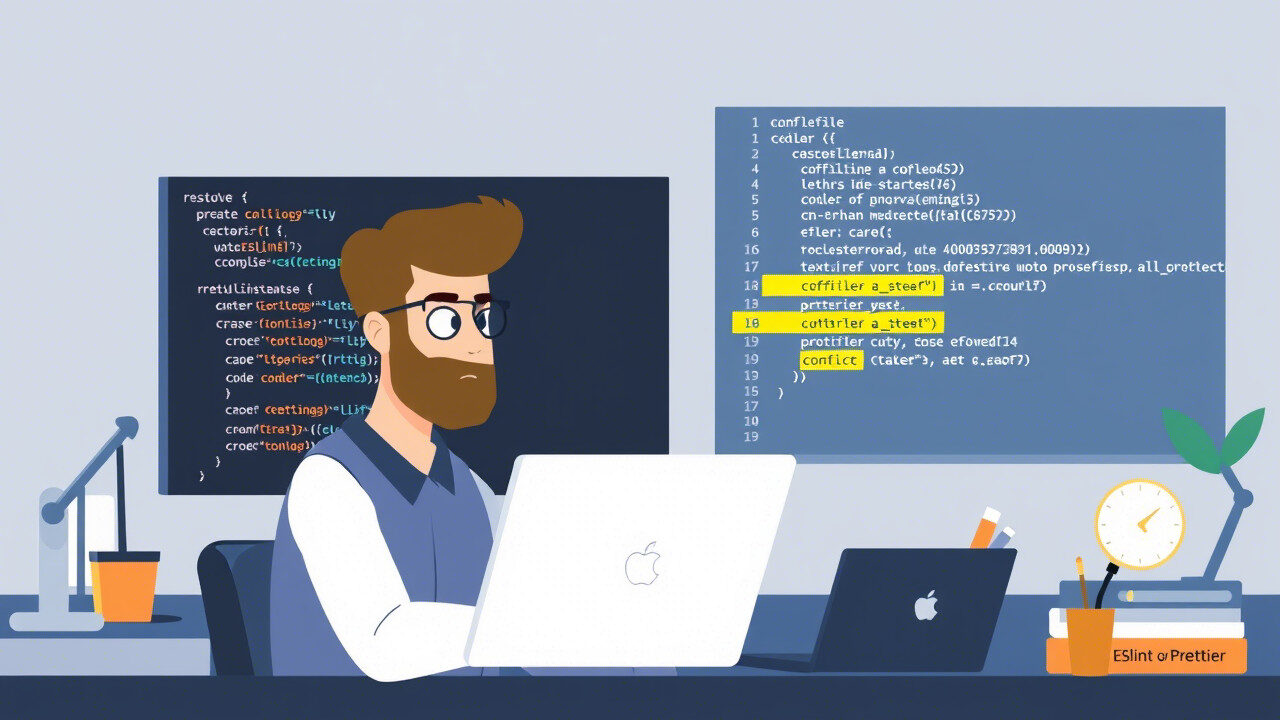Presently, developers rely on ESLint and Prettier to uphold code quality and consistency as a vital part of development working. These two tools are, however, powerful in their own right, but working on them together often raises Linter conflicts and formatter problems that can annoy developers and disrupt automated pipelines. This step-by-step guide will help you trace the root causes of those conflicts, configure your tools accordingly, and create the coding environment with maximum productivity.

Understanding the Problem: Why Linters and Formatters Clash
Before jumping into solutions, it’s important to understand the difference between a linter and a formatter:
- Linters (like ESLint) analyze your code for potential errors, code smells, and stylistic issues.
- Formatters (like Prettier) automatically adjust the structure and layout of code for readability and consistency.
When both of these tools try to do the same thing but in slightly different ways, there is bound to be a conflict between the two linting tools. For example, ESLint might warn you about an absent semicolon, while Prettier may then choose to put it in or take it out based on its configuration. A common tug of war ends up being quite frustrating in your codebase.
Step 1: Decide Which Tool Does What
To prevent formatter issues, clearly define the scope for each tool. A common approach:
- Let Prettier handle formatting (line length, indentation, spacing)
- Let ESLint handle code quality and potential bugs
✅ Recommended:
- Use the eslint-config-prettier package to turn off formatting rules in ESLint
- Use the eslint-plugin-prettier package to report Prettier formatting issues as ESLint errors
Step 2: Install and Configure Prettier
Prettier works best when explicitly configured. Create a .prettierrc or prettier.config.js file with your team’s preferences.
Example:
{
“semi”: true,
“singleQuote”: true,
“tabWidth”: 2,
“printWidth”: 100
}
✅ Tips:
- Avoid relying solely on editor defaults
- Share your config in the project repo to ensure consistency across teams
Step 3: Set Up ESLint and Integrate with Prettier
To avoid ESLint and Prettier stepping on each other’s toes, install these packages:
npm install –save-dev eslint prettier eslint-config-prettier eslint-plugin-prettier
Then update your .eslintrc.js file:
module.exports = {
extends: [
‘eslint:recommended’,
‘plugin:prettier/recommended’ // Enables eslint-plugin-prettier and eslint-config-prettier
],
plugins: [‘prettier’],
rules: {
‘prettier/prettier’: ‘error’
}
};
This setup ensures ESLint delegates formatting responsibilities to Prettier, reducing Linter conflicts.
Step 4: Use Consistent File Formatting Across Your Editor and CI/CD
Even with the right config, formatter issues can arise if different environments apply different formatting rules. Ensure consistency by:
- Installing Prettier and ESLint extensions in your IDE
- Adding format/lint scripts to package.json
- Running these scripts in your CI/CD pipelines
Example scripts:
“scripts”: {
“lint”: “eslint .”,
“format”: “prettier –write .”
}
Step 5: Automate Formatting on Save and Commit
To prevent human error, automate formatting with tools like:
- Editor integration (e.g., VS Code: editor.formatOnSave = true)
- Lint-staged: Formats only changed files before a commit
- Husky: Triggers pre-commit hooks to enforce formatting
Install:
npm install –save-dev husky lint-staged
Add to package.json:
“lint-staged”: {
“*.js”: [“eslint –fix”, “prettier –write”]
}
This ensures formatter issues are caught and fixed before code even hits the repository.
Step 6: Validate the Final Output
Run a full lint and format pass before merging or releasing code. This double-checks that no Linter conflicts or formatter issues remain.
✅ Pro Tips:
- Use GitHub Actions or GitLab CI to run lint checks automatically
- Integrate badge indicators (e.g., “Lint passing”) in your README for visibility
Final Thoughts

While solving Linter conflicts and formatter issues seemingly more about choosing one tool against another, the real job lies in making the tools work together. Giving authority to Prettier for formatting and ESLint for code logic and structure allows you to have a development environment that is maintainable and free from conflicts. Standardize configurations and automate the process of formatting, and then go ahead and train your team—this is how streamlined coding and cleaner pull requests are done.
Why TechNow is the Trusted Choice for DevOps and Code Quality in Germany
In the arena of efficient development workflows, TechNow stands tall as the leading IT support service company in Germany. It specializes in DevOps best practices, CI/CD pipeline setups, and major developer pain points: Linter conflicts and formatter issues. When it comes to developing easily scalable front-end applications or cloud-native backed services, TechNow will synchronize tools like ESLint and Prettier with your engineering standards. Work with TechNow for a one-stop solution that walks you through creating cleaner, faster, and more compliant codebases that work for your team and tech stack.





